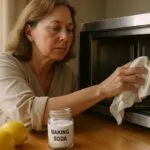Oil stains show up in seconds. One splash while cooking and dinner ends up on a shirt. Parents and house owners see it all the time, and the washer does not always fix it. Even high efficiency washing machines can leave grease behind.
Dish soap cuts oil in the sink, so it can help with stain removal on clothes too. The surfactants in dish-washing liquid break up grease so water can carry it away. That is true for cotton tees and many delicate fabrics, if handled gently.
This guide shows quick, proven steps with dish soap, baking soda, and simple laundry tips. Short process, solid results. Grease stains do not stand a chance.
Key Takeaways
- Dish soap, like Dawn Platinum, uses surfactants to break up oil stains on fabric; a 2023 study showed some plant-based liquids beat common laundry powders.
- Mix one part dish soap with two parts baking soda for tough spots, then let it sit 12-24 hours before washing.
- Check care labels first; hot water or hard scrubbing can damage silk or wool, and heat can set stains.
- Too much dish soap makes excess suds that trap oils. For spot treatment, use under two teaspoons per garment.
- Air dry after deep cleaning. Heat from a dryer can set any leftover grease, so wait until the stain is fully gone.
How Does Dish Soap Work on Oil Stains?
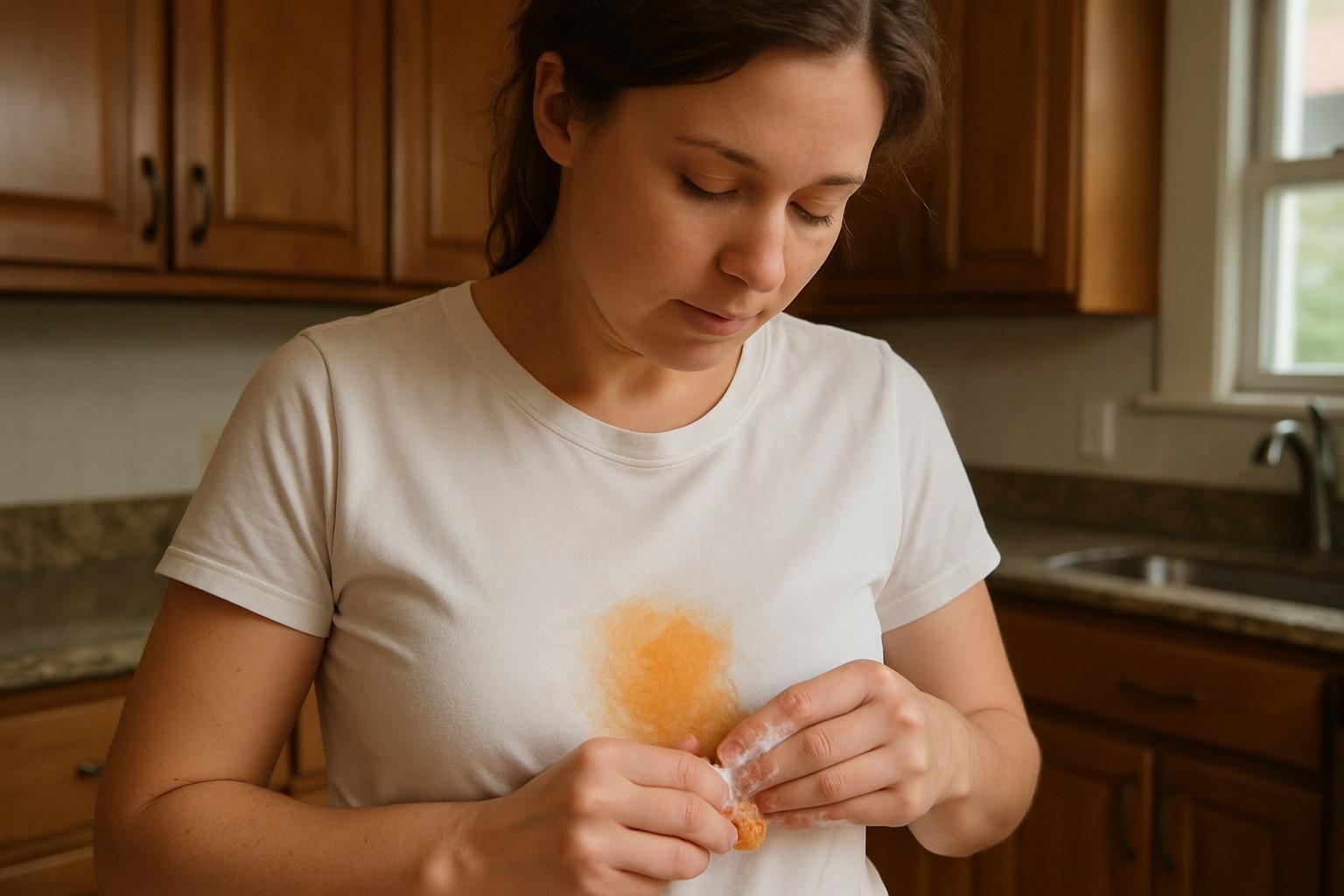
Dish soap breaks oil apart, then lifts it from fibers so water can rinse it out. Think of it like tiny magnets for grease that help stains release from fabric.
The science behind dish soap and grease removal
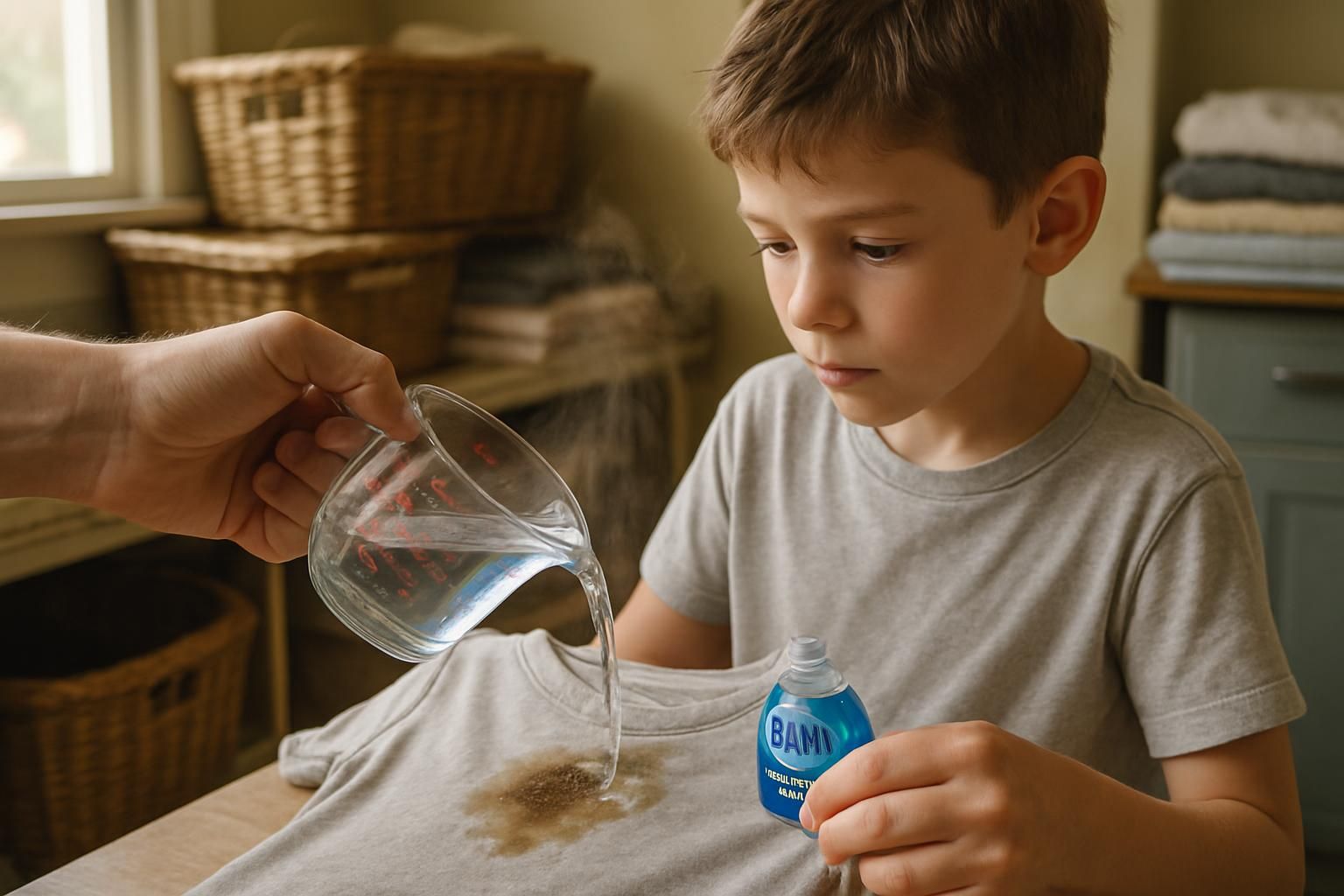
Oil resists water. That is why water alone will not move grease stains. Surfactants in dish soap fix that. Each molecule has a water-loving end and an oil-loving end. The oil end grabs the stain, the water end pulls it into the rinse.
Formulas like Dawn Platinum use strong surfactants that cling to grease. Warm water can help by softening thick oil, especially kitchen splatters. Waiting too long lets oil oxidize, which makes it harder to remove later.
Using the right cleaner early gives families a better shot at full stain removal on the first try.
Key ingredients that target oil stains
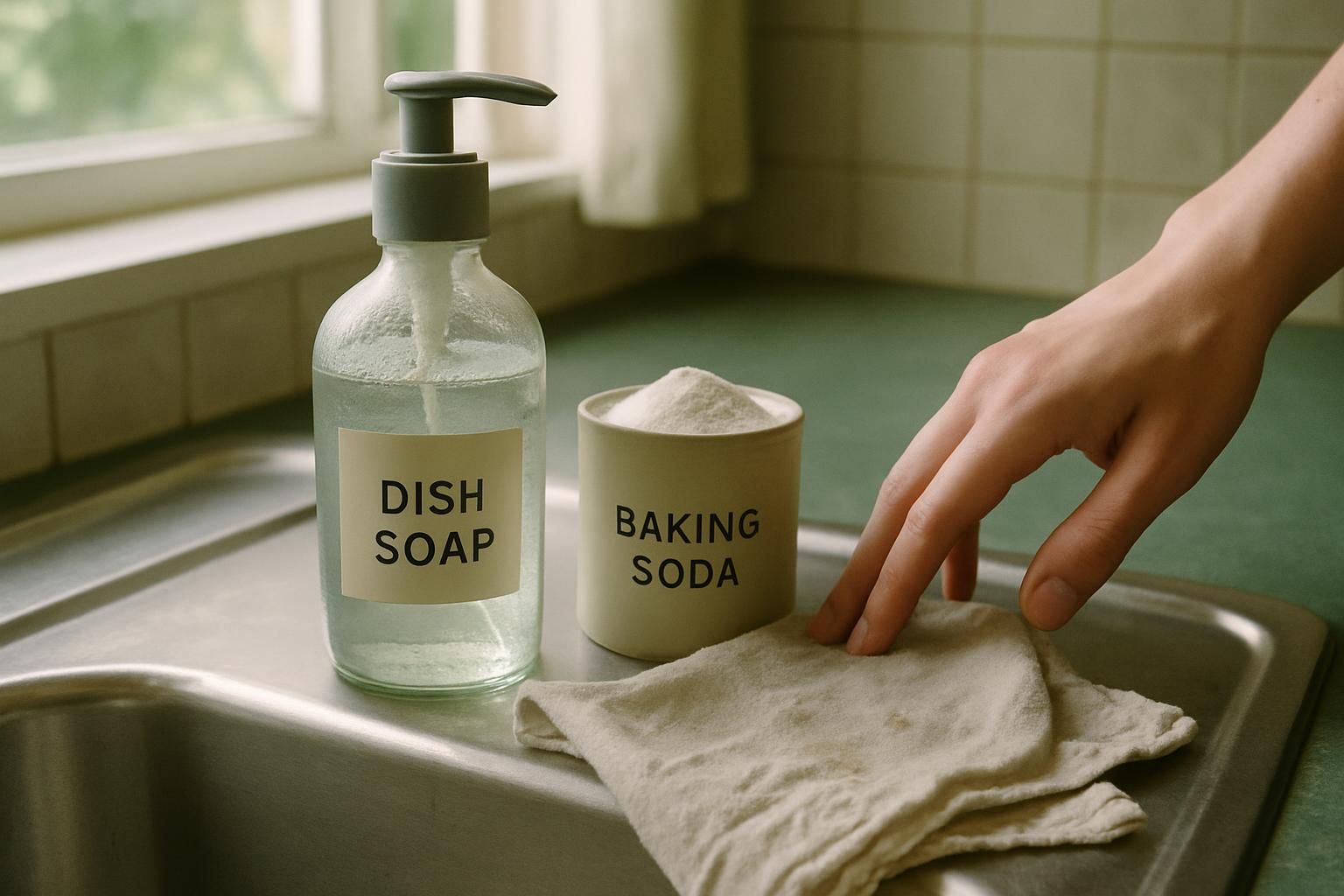
Surfactants do the heavy lifting. They split oil into tiny bits so water can flush it away. Many families reach for Dawn Platinum for that reason.
Greener choices use plant-based ingredients made from corn protein or wood fiber. A 2023 lab test found some of these liquids outperformed several laundry powders on stain removal.
Baking soda helps by pulling oil from fibers, which supports stain lifting. WD-40 can dissolve grease, but it may leave residue. Most homes prefer safer, low-odor products.
Hydrogen peroxide can help on light stains. It works best mixed with a little baking soda and gentle detergent, especially on delicate fabrics. With the right combo, stains loosen before they ever hit the washing machine.
Preparing to Remove Oil Stains
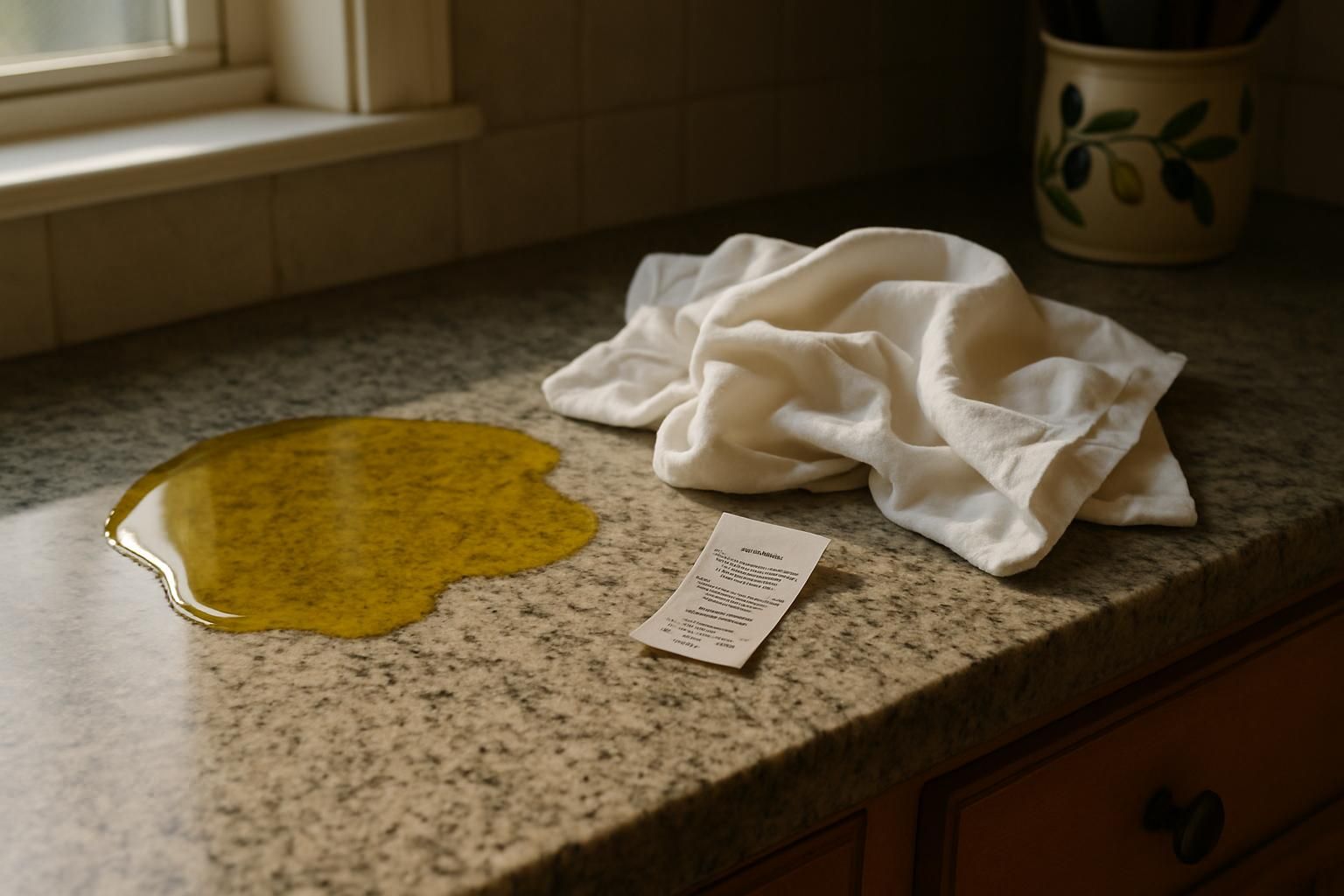
Check the care label before any stain treatment. Some fabrics need gentle handling, and a wrong step can set grease stains for good.
Gather materials and tools
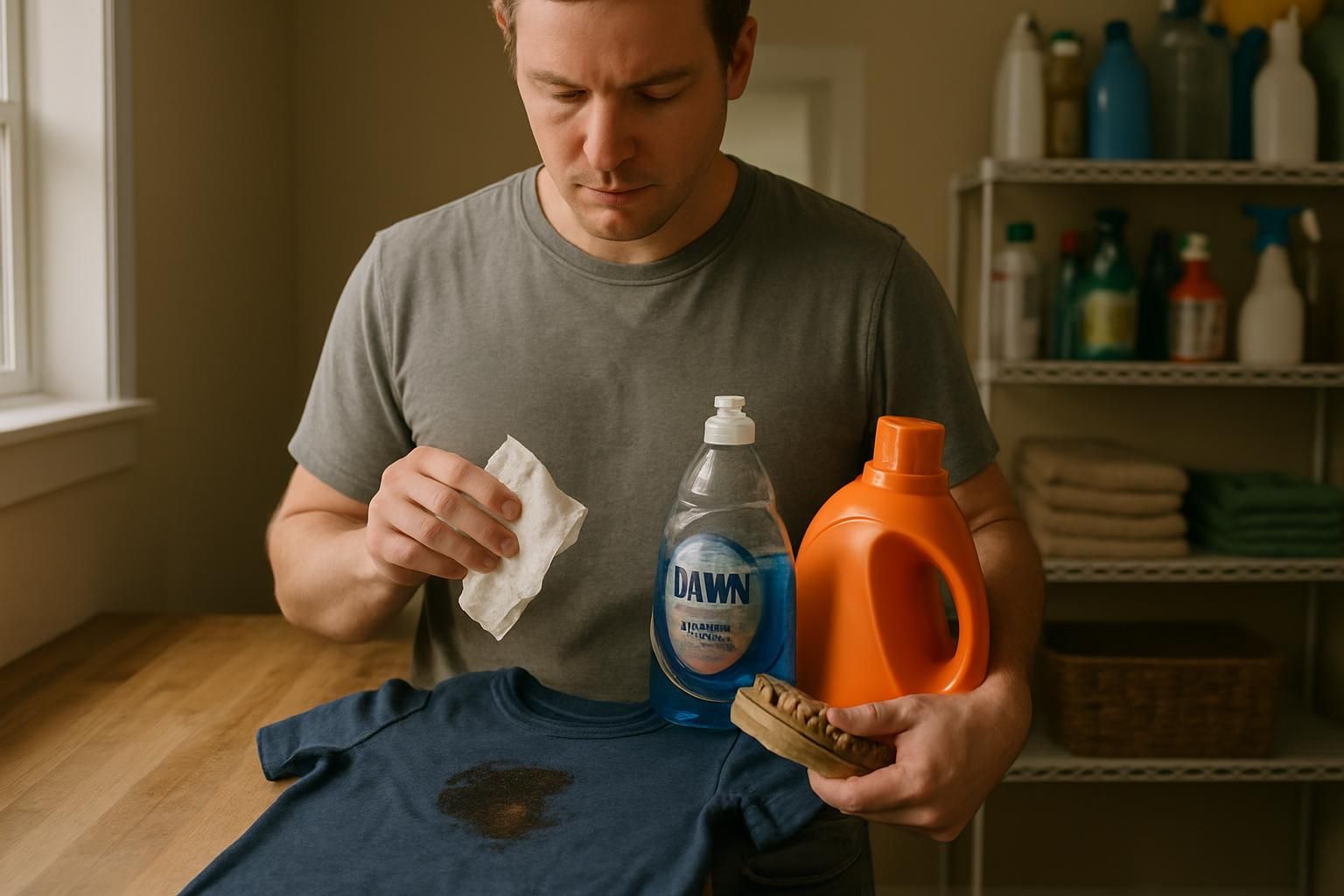
Have these on hand:
- Paper towels or a clean cloth for blotting
- Dish soap such as Dawn Platinum, plus liquid laundry detergent
- Warm or hot water, based on the label
- A soft brush or old toothbrush
- Baking soda for older or stubborn stains
For heavy grime like motor oil, products such as Tide Hygienic Clean can boost cleaning. First, blot fresh grease with paper towels so it does not spread. Then add a small amount of soap, enough to cover the mark. Keep a small bowl nearby for mixing paste with baking soda when needed.
Always read the care label first, since some fabrics need a gentle touch during stain treatment.
Consider fabric type and care label instructions
Different fabrics need different steps. Cotton and polyester usually handle dish soap. Silk and wool are delicate and may react poorly to strong cleaners.
Labels that say dry clean only mean home treatment is risky. Hot water can shrink fabric or set stains. Heat can also drive oil deeper, so skip the dryer until the stain is gone.
Bleach is a maybe. Only use it if the tag says it is safe. Colors and certain fibers can change fast with the wrong cleaner. Test any method on a hidden spot first. Simple checks protect clothes and avoid laundry regret.
How to Remove Fresh Oil Stains with Dish Soap
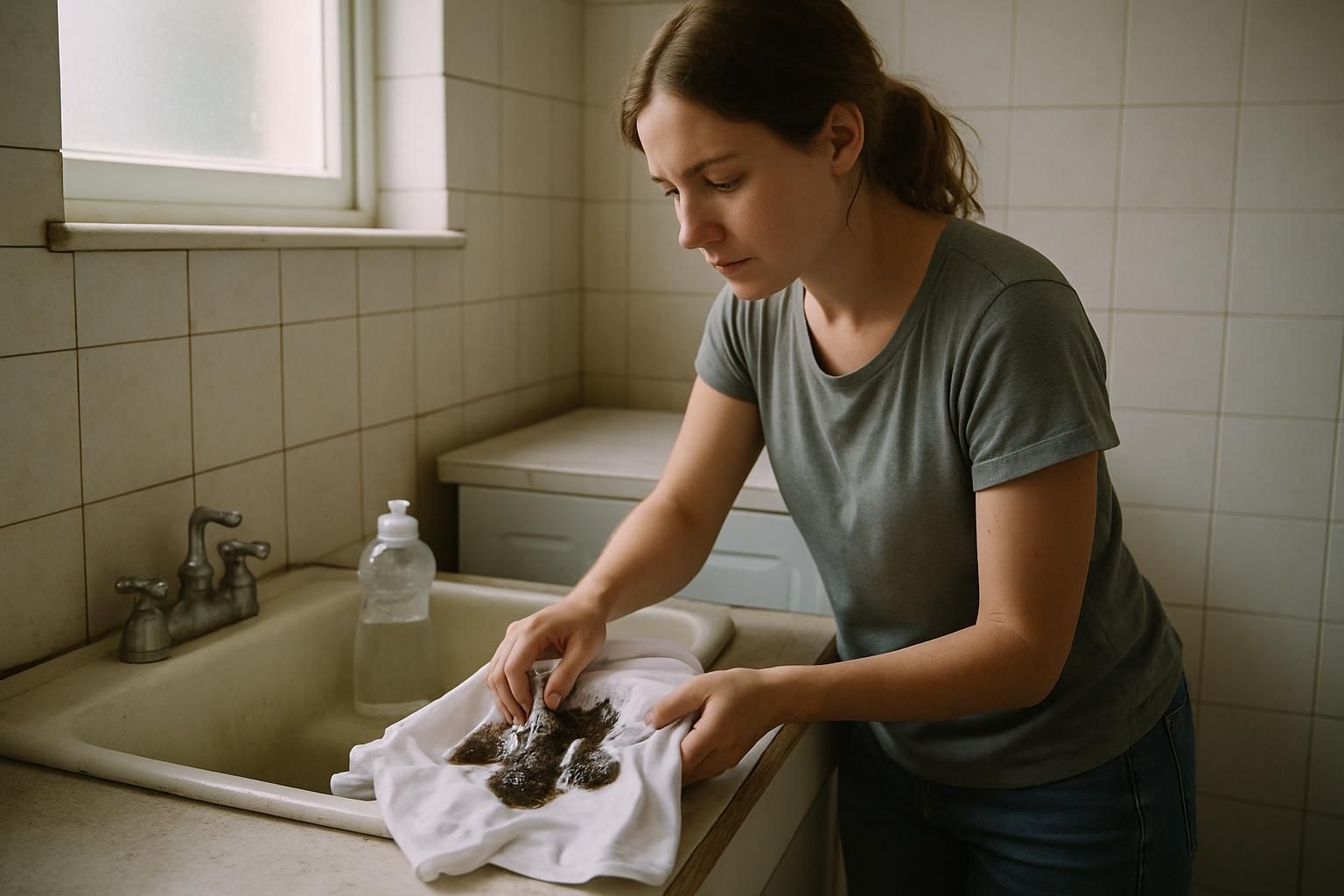
Fresh grease is easier to beat. Move fast and keep the stain small. This simple process works well on daily spills.
Blot excess oil
Use paper towels to dab the spot. Let the towel soak up as much oil as possible before it sinks in. Rubbing spreads the stain, so keep the motion gentle.
Blotting slows the stain from setting and improves stain removal later with dish soap or laundry detergent. Quick action matters, especially on delicate fabrics.
Apply dish soap directly to the stain
Apply a few drops of dish soap, like Dawn Platinum, right on the stain. For spot treatment, less is more. In most cases, under two teaspoons is plenty.
Test a hidden spot first on delicate fabrics to avoid fading. Do not pour dish soap into the washing machine, since it can cause extra suds. Treat the area by hand for better control.
Gently rub the soap into the fabric
Work the soap in with a soft toothbrush or fingers. Use small circles to push the soap into the fibers. Pressure should be light, just enough to help it spread.
This helps lift fresh grease without spreading it. Test delicate fabrics in a hidden area before treating the front of the garment. Give the soap a little time to work before rinsing.
Let the soap sit for 10â15 minutes
Let the soap rest on the fabric for 10 to 15 minutes. That pause gives the surfactants time to break down oil. Use the short end of the range for light marks and the long end for stubborn stains.
Keep an eye on delicate items. Then move on to rinsing and check whether the stain has faded.
Rinse and check for stain removal
Rinse the spot with warm water. Run water through the back of the stain to push grease out. Check under bright light for any shadow left behind.
If the mark remains, repeat the steps before washing. On cotton and polyester, warm water often works better than cold. Air dry after treatment so heat does not set any leftover oil.
How to Remove Older or Stubborn Oil Stains
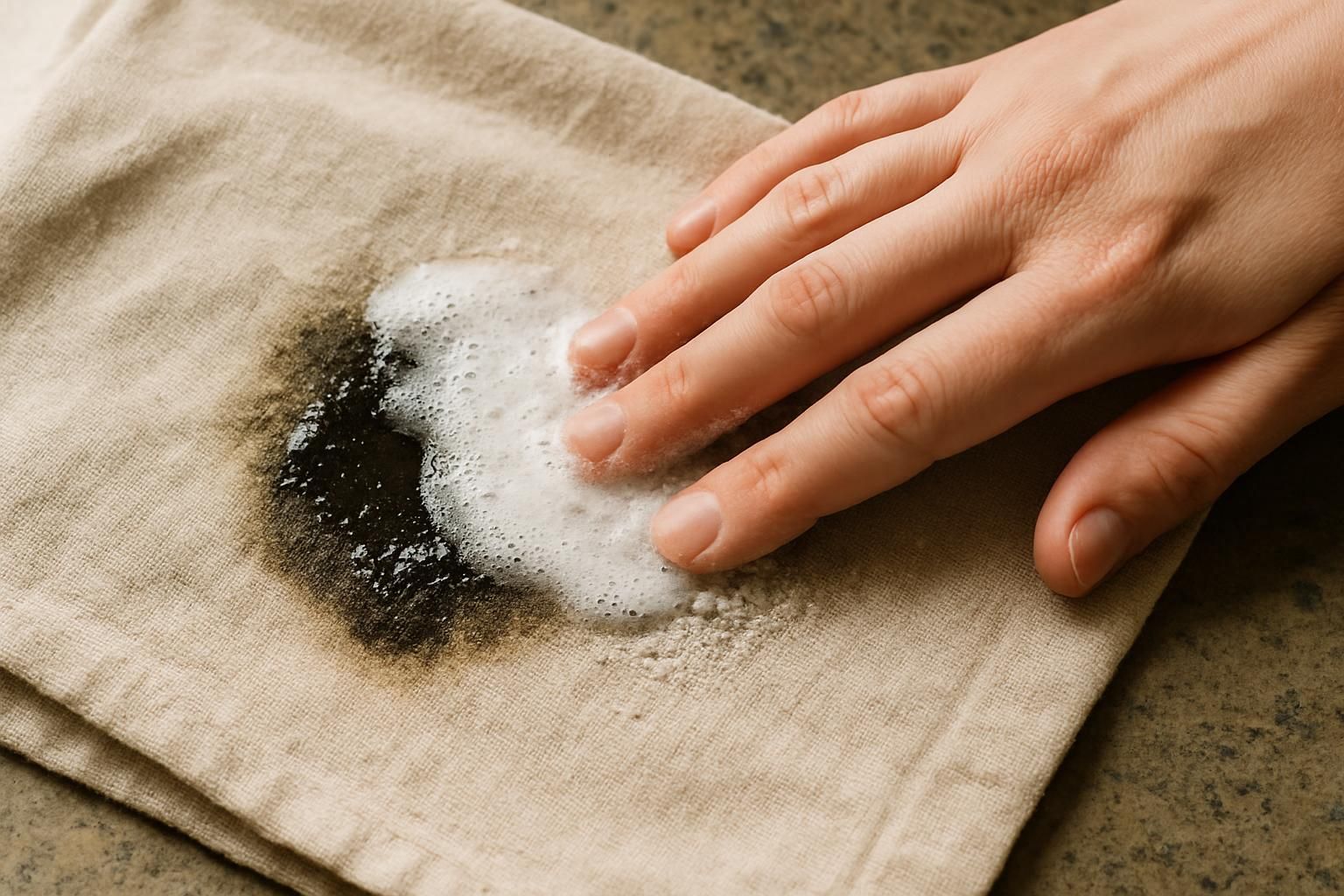
Set-in grease needs extra help. Pair dish soap with baking soda for a stronger punch.
Combine dish soap with baking soda
Stir one part Dawn Ultra Dish Soap with two parts baking soda. Add a splash of water to make a spreadable paste. Cover the stain fully with the paste using a finger, spoon, or old card.
Let it sit 12 to 24 hours. Dish soap breaks down the oil while baking soda pulls it out of the fibers. This works on tees, table linens, and jeans, even after a trip through the dryer.
Scrub with a soft toothbrush
Use a soft toothbrush to massage the paste into the threads. Small circles help lift oil without tearing fabric. Strong scrubbing can spread the stain, so keep it light.
This step targets grease trapped deep in the weave. Focus on one spot at a time, like collars or cuffs. Reapply paste if needed, then move to rinsing.
Rinse with warm water and repeat if needed
Rinse under warm water to loosen and carry off the paste and oil. Warm water softens grease, which makes it easier to remove. For tough, old marks, a 30-minute warm soak can help.
If any stain lingers, repeat the paste and brush steps. Hold off on the washing machine until the mark has faded a lot, or it may set in.
Wash and air dry
Wash with regular laundry detergent using the cycle that matches the care label. Choose the warmest safe temperature for the fabric.
Then skip the dryer. Heat can set hidden oil. Air dry on a rack or hanger, check the spot in bright light, and repeat treatment if anything remains.
Additional Tips for Effective Stain Removal
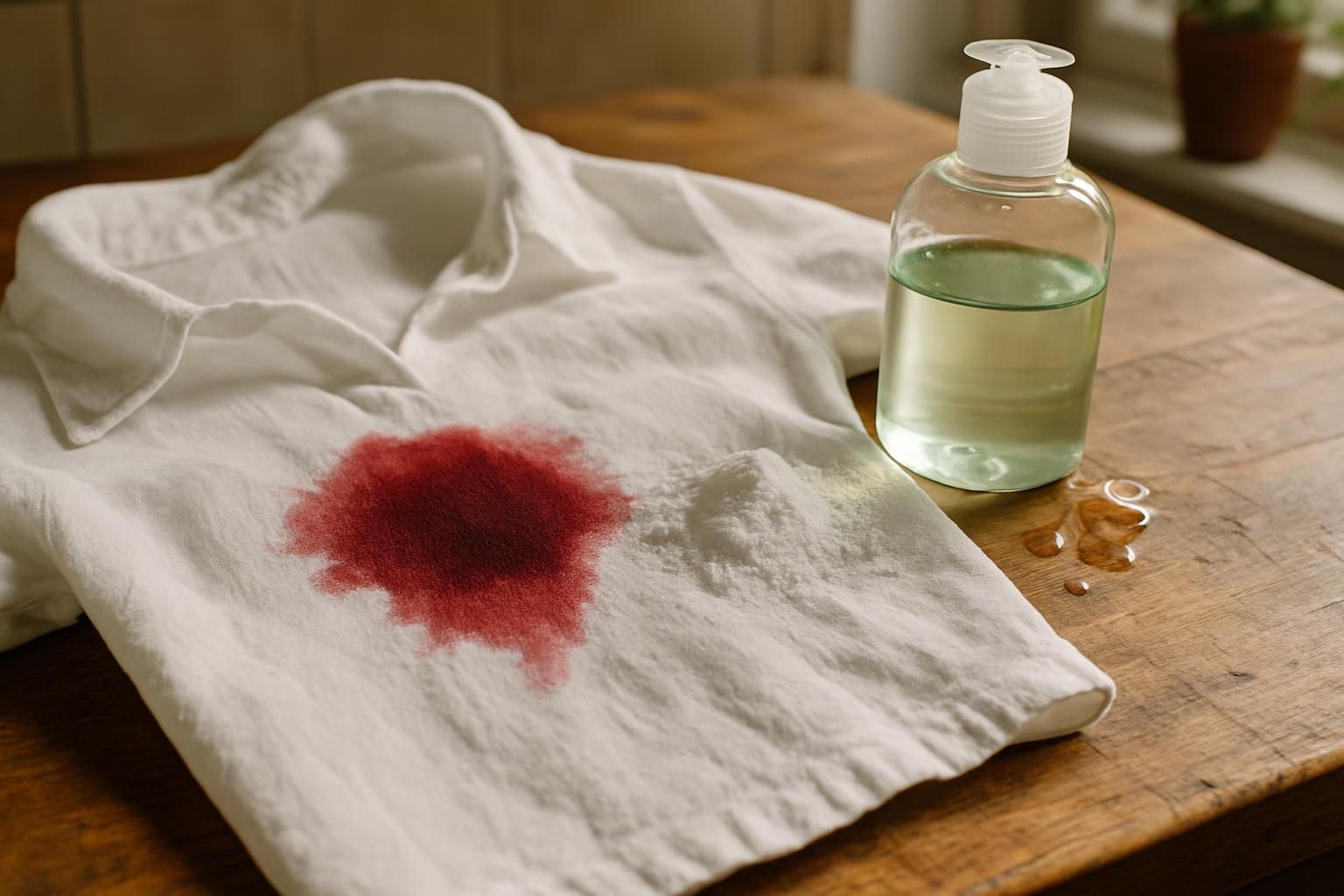
A few small tweaks can turn a good clean into a great one.
Use warm water for better results
Warm water helps dish soap grab oil. Research from Cleveland Clinic notes that warm or hot water can lift older stains better than cold. That includes sweat and similar marks.
Many homes pre-soak tough areas in warm water for 30 minutes, then wash with laundry detergent. Add white vinegar only if the fabric allows it, and avoid strong acids on delicate fabrics. Always follow the care tag for temperature.
Avoid using the dryer until the stain is gone
Dryer heat sets oil. Once set, grease stains are hard to remove. Air dry after each treatment so there is a chance to confirm the stain is gone.
Thorough rinsing matters too. Leftover soap can trap oil and attract more dust later. Let the fabric dry naturally, then inspect the area.
Best Dish Soaps for Oil Stain Removal
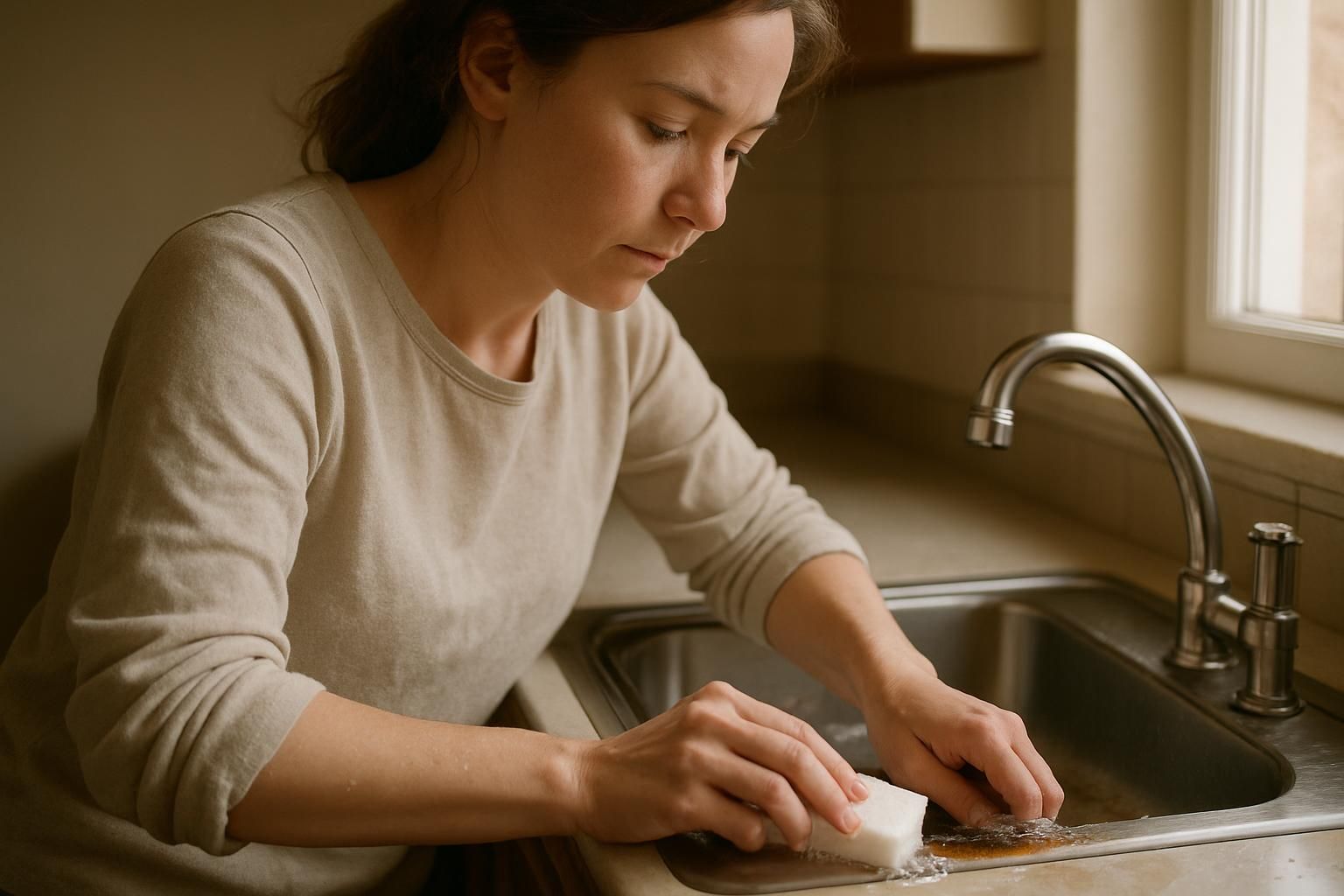
Some dish soaps clear oil stains faster and with less scrubbing. Here are options many families trust.
Dawn® Platinum
Dawn® Platinum offers strong grease-cutting power per drop. Many busy homes reach for it when oil stains hit cotton or blends.
For spot treatment, a small amount is enough. In general, under two teaspoons per garment is plenty. Too much soap means too many suds, which makes rinsing harder and can trap residue.
Some users pair it with oxygen cleaner for heavy jobs. The key is a light hand and complete rinsing.
Eco-friendly dish soap options
Plant-based formulas can be tough on stains and easier on skin. One lab-created detergent used wood fiber and corn protein to form cellulose nanofibers with zein. In tests, it beat a common laundry powder on stain removal and showed no damage to cotton under a microscope.
Several USDA Certified Biobased products list high renewable content. Families who like greener picks can still target grease stains without giving up cleaning power.
Common Mistakes to Avoid
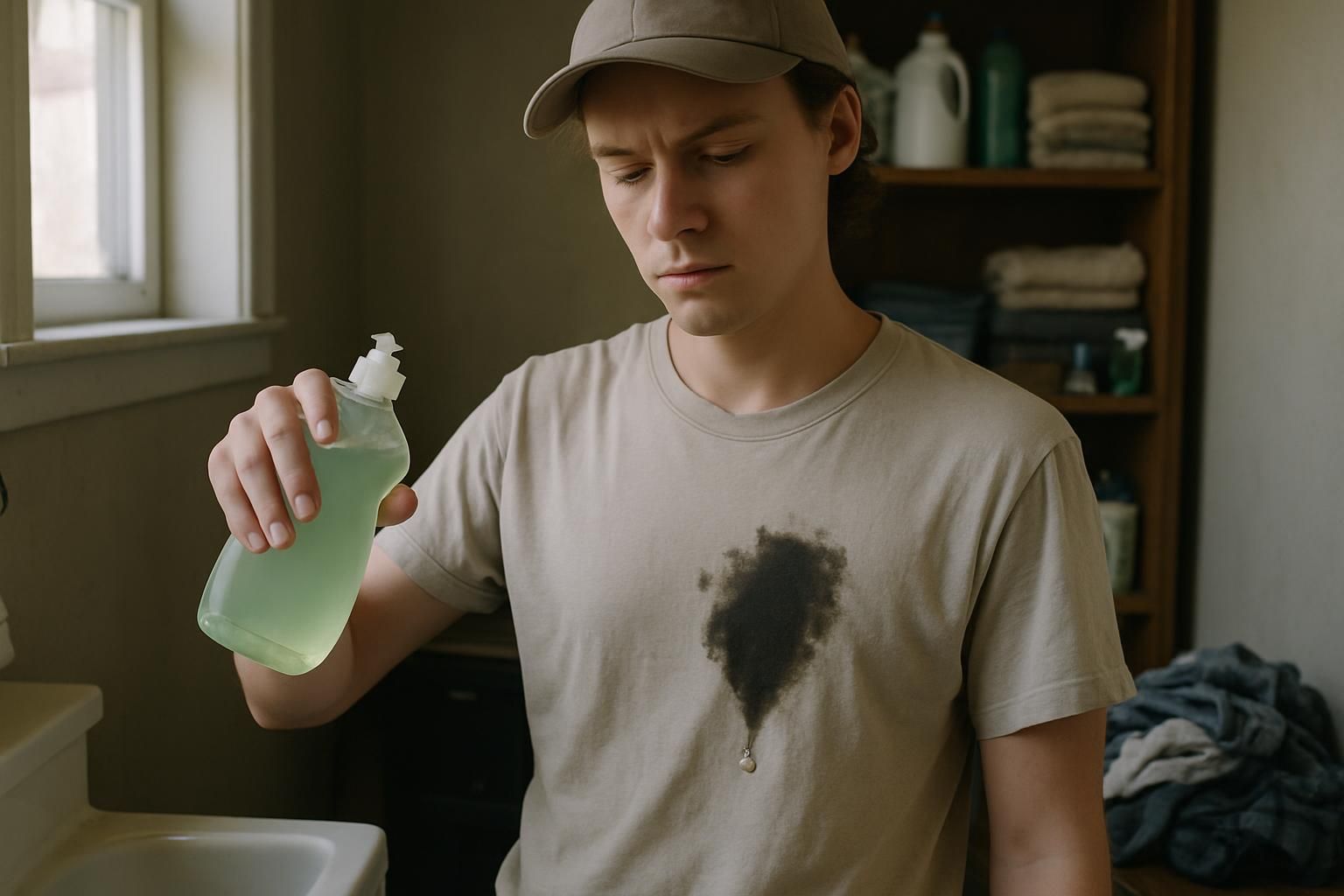
A few small slips can keep stains around longer. Skip these and save time.
Using too much soap
Extra dish soap does not mean cleaner clothes. Big suds do not improve stain removal, and residue can cling to fibers. Oil can even get trapped under leftover soap.
Skipping the air-dry step
Putting stained items in a dryer can lock stains in. Heat drives oil deeper into fabric. Air drying gives one last chance to confirm the stain is gone.
Ignoring fabric care labels
Many people skip reading tags. A 2023 survey found care labels are often overlooked, even though they guide temperature and cleaners. That choice leads to shrinkage, fading, or set stains.
Preventing Oil Stains and Troubleshooting Tips
Preventive Measures
Use proper fabric care and act immediately when spills occur. Wearing protective aprons during cooking and promptly blotting excess oil can reduce the risk of stubborn stains. Regular wash cycles with the right laundry detergent and attention to care labels help maintain fabric care.
Step-by-Step Guide for Oil Stain Treatment
Dish soap works well for oil stains because its ingredients are formulated to break down grease. To treat an oil stain, apply a small amount of dish soap to the stain, rub it in, and let it sit for at least 10 minutes to an hour.
- Remove excess oil: If the stain is fresh, blot or scrape off as much excess oil as possible.
- Apply dish soap: Cover the stain with a small amount of liquid dish soap. You can use a product like Dawn for its strong grease-cutting properties.
- Rub it in: Gently rub the dish soap into the stain to help it penetrate the fabric.
- Let it sit: Allow the dish soap to sit on the stain for at least 10 minutes. For tough stains, letting it sit for an hour or longer can be more effective.
- Soak or wash: For best results, soak the item in warm or hot water for at least 30 minutes. Alternatively, wash the garment in the washing machine with an enzyme-based detergent following the care label instructions.
- Line dry: Do not put the item in the dryer until you have confirmed the stain is completely gone, as the heat can set the stain permanently.
Frequently Asked Questions
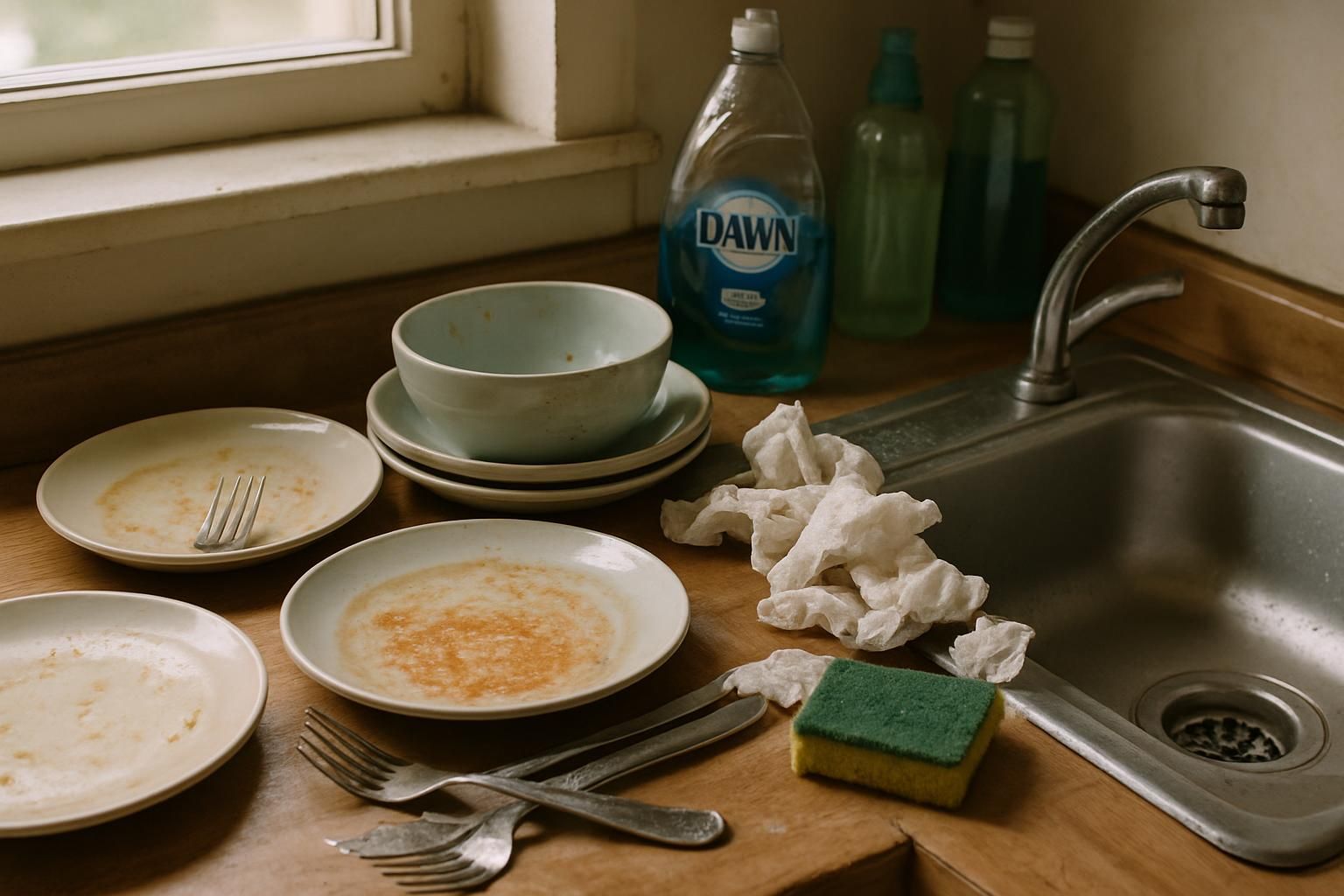
Here are quick answers to common questions about dish soap and grease stains.
Can dish soap remove oil stains from clothes and fabrics?
Yes, dish soap can break down grease in fabric fibers. It works because it cuts through cooking oils on plates and pans. That same power helps lift oily spots out of shirts or jeans.
How do I use dish soap to treat an oil stain on a shirt?
First, blot the stain with a paper towel or cloth to soak up extra oil. Next, rub a small drop of dish soap into the stain with your fingers or a soft brush. Let it sit for ten minutes, then rinse with warm water before washing as usual.
How often can you use dish soap for stain removal?
Use it whenever a stain shows up, as long as the fabric allows it. Fresh oil and even older marks often respond to a dish soap and baking soda pretreat, followed by a proper wash in the washing machine with the warmest safe water.
Will dish soap damage clothes or delicate fabrics?
It can, if used the wrong way. Some delicate fibers, like silk or wool, may fade or weaken with strong soaps. High-suds formulas may leave residue if not rinsed well, so always test this dishwashing liquid on a hidden area first.
What if the oil stain has already set after washing and drying?
Old stains are stubborn but not impossible to treat. Try applying dish soap again, allow a longer soak, then wash the item in the hottest water that is safe for the material. Sometimes it requires more than one try.
Conclusion
Dish soap can rescue clothes from grease stains. Its surfactants loosen oil so water can carry it away. For older spots, a paste of baking soda and dish soap adds extra pulling power.
Check care labels, use warm water when safe, and apply a small amount of soap. Skip the dryer until the stain is gone, since heat can set oil. With a little patience and the right stain removal steps, even stubborn oil stains fade from favorite shirts and pants.
References
- https://321zips.com/blog/how-to-get-oil-stains-out-of-clothes/
- https://www.apartmenttherapy.com/how-to-get-oil-out-of-clothes-36741448 (2024-07-26)
- https://www.rd.com/article/how-to-get-oil-stains-out-of-clothes/ (2025-09-19)
- https://pubs.nmsu.edu/_c/C502.pdf
- https://tide.com/en-us/how-to-wash-clothes/how-to-remove-stains/general-oil-stains
- https://dawn-dish.com/en-us/how-to/remove-grease-stains-from-laundry/
- https://www.cocolaundry.com/blog/effective-techniques-for-oil-stain-removal
- https://bynext.co/blog/how-get-oil-and-grease-stains-out-clothes/ (2024-05-31)
- https://www.incolororder.com/2025/04/my-favorite-diy-stain-remover-for-oil.html (2025-04-17)
- https://www.whirlpool.com/blog/washers-and-dryers/how-to-get-grease-and-oil-stains-out.html
- https://lucentglobe.com/en-us/blogs/news/remove-oil-grease-stains-from-clothes?srsltid=AfmBOooARZcEZNahpDIVxsuJGdrt-4_n3I-tAyS7cJ2SZ_Dka8Pp2ur4 (2024-04-24)
- https://www.ecowatch.com/eco-friendly-detergent-wood-corn.html (2025-03-25)
- https://www.researchgate.net/publication/370119685_The_impact_of_workers_knowledge_of_clothing_care_labels_information_on_the_adoption_of_appropriate_clothing_care_methods
- https://lucentglobe.com/en-us/blogs/news/remove-oil-grease-stains-from-clothes?srsltid=AfmBOop9HAEnHF7uwK4mPLFqibJundrujCon6QHHociXY9EqXQsEI7XO (2024-04-24)






